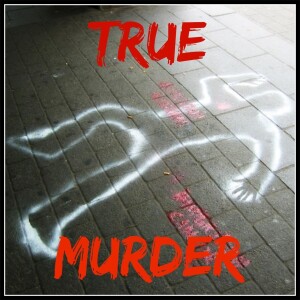
True Murder: The Most Shocking Killers
True Crime

In April, 1893, John Marshall, an immigrant and successful farmer on Sumas Prairie in British Columbia, was found dead lying sprawled across the veranda of his farmhouse. The farmer's face was a mess, his nose smashed in and cracked blood covering his forehead around a jagged black hole. The shocked neighbour who discovered the body rushed to summon the authorities. An autopsy, coroner's inquest and murder investigation followed. Two days later, a handyman named Albert Stroebel was arrested for Marshall's murder. Stroebel was an unlikely killer: short and physically disabled. The young man the community knew was not capable of murder, and locals were shocked to imagine that Stroebel could have killed the man who had treated him like family. But something had gone tragically wrong on the night Marshall died. Unravelling the mystery would take nine months and two lengthy trials that seized the attention on both sides of the Canadian-American border, splitting them into pro- and anti-Stroebel factions. Newspapers devoted page after page of coverage and throngs of spectators squeezed into the courtroom galleries. The first trial in New Westminster ended with the jury hopelessly deadlocked, the second in Victoria found him guilty and set an impending date for his execution. The heaviest hitters of BC?s political and legal establishment took part including former and current premiers, an Attorney General, and a future Supreme Court justice. When the second trial ended with a guilty verdict and death sentence many in the public howled in protest, convinced that a young man had been condemned to die for a crime he did not commit. And the dramatic events would not stop there. With the condemned man sitting on death row, the case would take more twists and turns that would lead Albert Stroebel to the shadow of the gallows.THE TRIALS OF ALBERT STROEBEL: Love, Murder and Justice at the end of the Frontier-Chad Reimer
view more
More Episodes
WHEN A KILLER CALLS-John Douglas
 2022-01-31
2022-01-31
 2022-01-31
2022-01-31
AMERICAN INJUSTICE-David Rudolf
 2022-01-27
2022-01-27
 2022-01-27
2022-01-27
DARK ROSES-Michael Benson
 2022-01-25
2022-01-25
 2022-01-25
2022-01-25
BEYOND KILLER FICTION-Sondra London
 2022-01-13
2022-01-13
 2022-01-13
2022-01-13
TAKING DOWN BACKPAGE-Maggy Krell
 2022-01-10
2022-01-10
 2022-01-10
2022-01-10
FORGOTTEN CALIFORNIA MURDERS-David Kulczyk
 2021-12-31
2021-12-31
 2021-12-31
2021-12-31
AMERICAN SCANDAL
 2021-12-20
2021-12-20
 2021-12-20
2021-12-20
MURDER CAPITAL OF THE WORLD-Emerson Murray
 2021-12-18
2021-12-18
 2021-12-18
2021-12-18
THE MURDER OF MARY TAKAHASHI-Rod Kackley
 2021-12-14
2021-12-14
 2021-12-14
2021-12-14
BUTCHER OF HANOVER-Alan R. Warren
 2021-12-09
2021-12-09
 2021-12-09
2021-12-09
THE VANISHED
 2021-12-06
2021-12-06
 2021-12-06
2021-12-06
IMMUNITY FOR MURDER-David M Beers
 2021-12-03
2021-12-03
 2021-12-03
2021-12-03
THE SHRINK NEXT DOOR
 2021-11-22
2021-11-22
 2021-11-22
2021-11-22
THE WOLFPACK-Peter Edwards
 2021-11-20
2021-11-20
 2021-11-20
2021-11-20
KLAN OF DEVILS-Stanley Nelson
 2021-11-16
2021-11-16
 2021-11-16
2021-11-16
EYES OF A MONSTER-Ron Peterson Jr.
 2021-11-09
2021-11-09
 2021-11-09
2021-11-09
012345678910111213141516171819
Create your
podcast in
minutes
- Full-featured podcast site
- Unlimited storage and bandwidth
- Comprehensive podcast stats
- Distribute to Apple Podcasts, Spotify, and more
- Make money with your podcast
It is Free
- Privacy Policy
- Cookie Policy
- Terms of Use
- Consent Preferences
- Copyright © 2015-2024 Podbean.com



